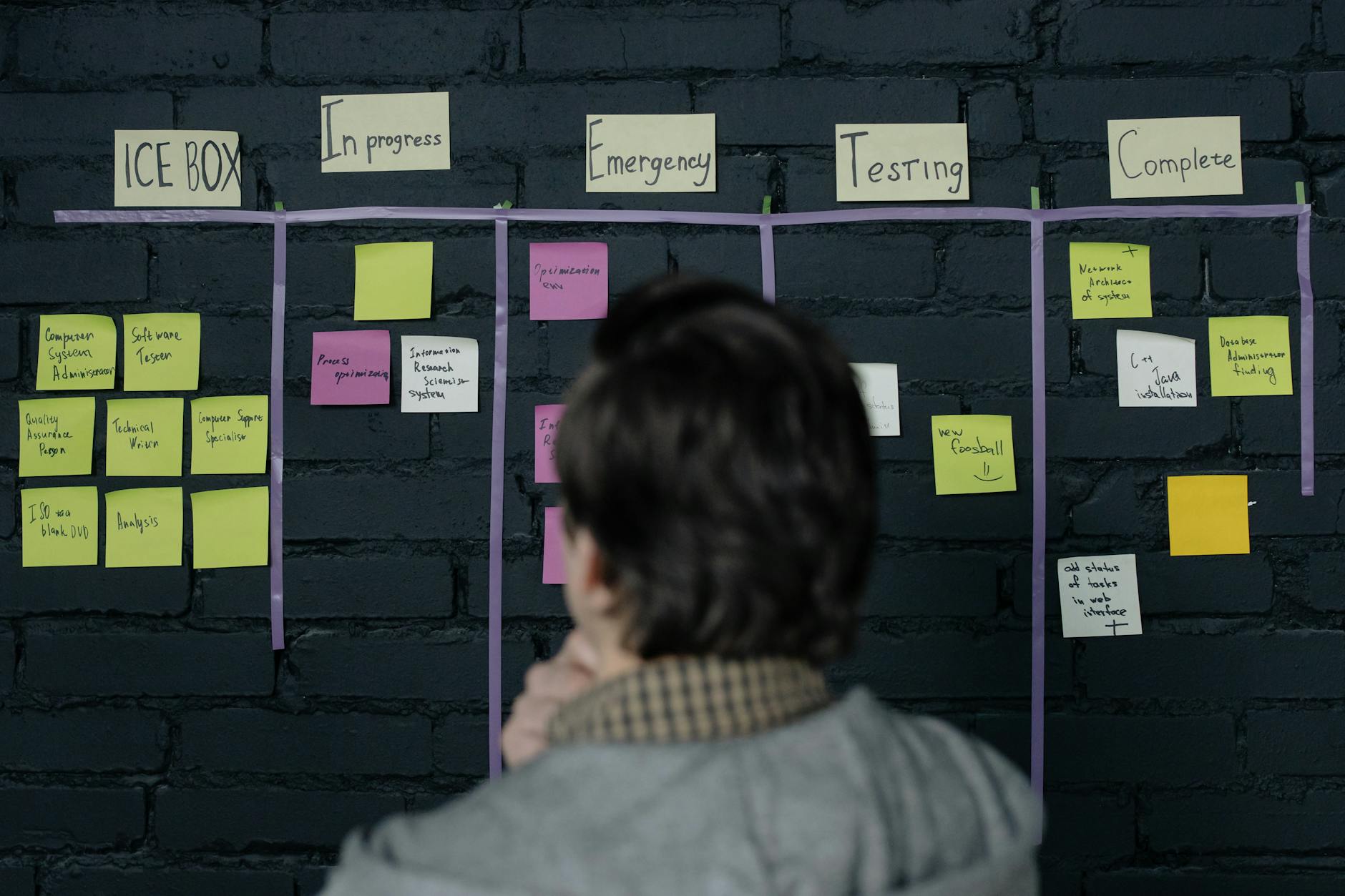Planning and productivity
Planning and productivity

Are you constantly feeling overwhelmed by your to-do list? Do you find yourself struggling to keep up with deadlines and juggling multiple tasks? You're not alone. In today's fast-paced world, planning and productivity have become essential skills for success in both our personal and professional lives.
Imagine being able to effortlessly manage your time, accomplish your goals, and still have energy left for the things you love. It's not just a dream – it's achievable with the right strategies and tools. Whether you're a busy professional, a student, or someone simply looking to make the most of each day, mastering the art of planning and boosting your productivity can be a game-changer. 💪🚀
In this comprehensive guide, we'll explore everything from the basics of effective planning to advanced productivity techniques. We'll dive into essential tools, discuss common pitfalls and how to overcome them, and even look at ways to leverage technology for enhanced efficiency. So, are you ready to transform your approach to planning and skyrocket your productivity? Let's get started!
Understanding the Basics of Planning

A. Defining clear goals and objectives
Setting clear goals and objectives is the foundation of effective planning. To get started:
-
Use the SMART framework:
-
Specific
-
Measurable
-
Achievable
-
Relevant
-
Time-bound
-
-
Align goals with your overall vision
-
Write them down for clarity and commitment
| Goal Type | Example |
|---|---|
| Short-term | Complete project proposal by Friday |
| Long-term | Increase market share by 10% within a year |
B. Breaking down tasks into manageable steps
Once you've defined your goals, break them down into smaller, actionable tasks:
-
Identify major milestones
-
Create a work breakdown structure (WBS)
-
Assign specific tasks to team members
-
Estimate time and resources needed for each task
C. Prioritizing tasks effectively
Not all tasks are created equal. Prioritize them using methods like:
-
Eisenhower Matrix (Urgent vs. Important)
-
MoSCoW method (Must, Should, Could, Won't)
-
ABC analysis (High, Medium, Low priority)
D. Creating realistic timelines
Develop achievable timelines to keep your project on track:
-
Consider dependencies between tasks
-
Allow buffer time for unexpected delays
-
Use Gantt charts or project management software
-
Regularly review and adjust timelines as needed
By mastering these planning basics, you'll set a solid foundation for increased productivity. Next, we'll explore the essential tools that can help streamline your planning process and boost efficiency.
Essential Tools for Efficient Planning

Digital calendars and scheduling apps
Digital calendars and scheduling apps are essential tools for efficient planning. These versatile applications help you manage your time, set reminders, and coordinate with others seamlessly. Here's a comparison of popular options:
| App | Key Features | Best For |
|---|---|---|
| Google Calendar | Sync across devices, Integrations | Personal and work use |
| Microsoft Outlook | Email integration, Team scheduling | Corporate environments |
| Apple Calendar | iCloud sync, Siri integration | Apple ecosystem users |
| Calendly | Automated scheduling, Time zone support | Professionals, freelancers |
Project management software
Project management software streamlines complex tasks and enhances team collaboration. These tools offer:
-
Task assignment and tracking
-
Gantt charts for timeline visualization
-
File sharing and version control
-
Progress reporting
Popular options include Asana, Trello, and Microsoft Project, each catering to different project scales and team sizes.
To-do list applications
To-do list apps help prioritize tasks and maintain focus. Key features to look for:
-
Task categorization
-
Due date setting
-
Recurring task options
-
Cross-platform synchronization
Time tracking tools
Time tracking tools provide insights into how you spend your working hours, helping to identify productivity bottlenecks. They often include:
-
Automatic time logging
-
Project-based tracking
-
Detailed reports and analytics
Mind mapping software
Mind mapping software aids in brainstorming and organizing ideas visually. These tools can significantly enhance your planning process by:
-
Facilitating creative thinking
-
Organizing complex information
-
Identifying connections between ideas
-
Aiding in presentation and communication of plans
With these essential tools at your disposal, you'll be well-equipped to tackle planning challenges efficiently. Next, we'll explore productivity techniques that can further boost your efficiency.
Productivity Techniques to Boost Efficiency

The Pomodoro Technique
The Pomodoro Technique is a time management method that uses focused work intervals followed by short breaks. Here's how it works:
-
Choose a task
-
Set a timer for 25 minutes
-
Work on the task until the timer rings
-
Take a 5-minute break
-
Repeat steps 1-4 four times, then take a longer 15-30 minute break
Benefits of the Pomodoro Technique:
-
Improves focus and concentration
-
Reduces burnout
-
Enhances productivity
Time blocking method
Time blocking involves scheduling specific tasks into dedicated time slots. This technique helps you:
-
Prioritize important tasks
-
Minimize distractions
-
Increase accountability
| Time | Task |
|---|---|
| 9:00 - 10:30 | Project A |
| 10:45 - 12:00 | Emails and meetings |
| 13:00 - 14:30 | Project B |
| 14:45 - 16:00 | Creative work |
Eisenhower Matrix for task prioritization
The Eisenhower Matrix categorizes tasks based on urgency and importance:
-
Urgent and Important: Do immediately
-
Important but Not Urgent: Schedule
-
Urgent but Not Important: Delegate
-
Neither Urgent nor Important: Eliminate
Getting Things Done (GTD) methodology
GTD is a comprehensive productivity system that involves:
-
Capturing all tasks and ideas
-
Clarifying and organizing them
-
Reflecting on priorities
-
Engaging in focused work
By implementing these techniques, you can significantly boost your efficiency and productivity. Next, we'll explore common planning pitfalls and how to overcome them.
Overcoming Common Planning Pitfalls

A. Dealing with procrastination
Procrastination can be a major roadblock to effective planning and productivity. To overcome this common pitfall, consider the following strategies:
-
Break tasks into smaller, manageable chunks
-
Use the "2-Minute Rule" for quick tasks
-
Implement the Pomodoro Technique
-
Set clear deadlines and accountability measures
| Strategy | Description | Benefit |
|---|---|---|
| Task Chunking | Divide large tasks into smaller parts | Less overwhelming, easier to start |
| 2-Minute Rule | Complete tasks that take 2 minutes or less immediately | Quick wins, builds momentum |
| Pomodoro Technique | Work in focused 25-minute intervals with short breaks | Improves focus and prevents burnout |
| Clear Deadlines | Set specific time limits for task completion | Creates urgency and motivation |
B. Avoiding over-planning and analysis paralysis
While planning is crucial, excessive planning can lead to inaction. To strike a balance:
-
Set a time limit for planning activities
-
Focus on essential details and avoid getting lost in minutiae
-
Use the "80/20 rule" to prioritize tasks
-
Embrace imperfection and be willing to adjust plans as needed
C. Managing unexpected interruptions
Interruptions are inevitable, but they don't have to derail your productivity. Here are some effective ways to handle them:
-
Create buffer time in your schedule
-
Use the "parking lot" method for non-urgent matters
-
Implement a "do not disturb" policy during focused work periods
-
Practice the art of politely saying "no" to non-essential requests
D. Handling scope creep in projects
Scope creep can significantly impact project timelines and resources. To keep your projects on track:
-
Clearly define project boundaries and deliverables upfront
-
Implement a change request process for new additions
-
Regularly review and communicate project progress
-
Use project management tools to track tasks and deadlines
By addressing these common planning pitfalls, you'll be better equipped to maintain focus, manage your time effectively, and achieve your goals. Next, we'll explore how to develop productive habits that complement your improved planning skills.
Developing Productive Habits

Creating a consistent daily routine
Establishing a consistent daily routine is the cornerstone of developing productive habits. By structuring your day, you create a framework that promotes efficiency and reduces decision fatigue. Here's a breakdown of key elements to include in your routine:
-
Wake-up time
-
Morning rituals (e.g., meditation, exercise)
-
Work blocks
-
Breaks and meals
-
Evening wind-down activities
| Time | Activity |
|---|---|
| 6:00 AM | Wake up |
| 6:30 AM | Exercise |
| 7:30 AM | Breakfast |
| 8:30 AM | Work block 1 |
| 12:00 PM | Lunch break |
| 1:00 PM | Work block 2 |
| 5:00 PM | Personal time |
| 10:00 PM | Bedtime routine |
Implementing effective time management strategies
Mastering time management is crucial for maximizing productivity. Consider adopting these proven techniques:
-
Pomodoro Technique: Work in focused 25-minute intervals, followed by short breaks
-
Time blocking: Allocate specific time slots for different tasks or projects
-
Eisenhower Matrix: Prioritize tasks based on urgency and importance
Practicing mindfulness and focus techniques
Incorporating mindfulness into your routine can significantly enhance your focus and overall productivity. Try these methods:
-
Daily meditation sessions
-
Deep breathing exercises
-
Mindful eating during breaks
-
Regular technology detoxes
Maintaining a clutter-free workspace
A tidy environment promotes clear thinking and efficient work. Implement these strategies to keep your workspace organized:
-
Adopt a minimalist approach to desk accessories
-
Implement a digital filing system for documents
-
Use cable management solutions
-
Conduct weekly decluttering sessions
By integrating these productive habits into your daily life, you'll create a solid foundation for increased efficiency and success in both your personal and professional endeavors. Next, we'll explore how technology can further enhance your productivity journey.
Leveraging Technology for Enhanced Productivity

Automating repetitive tasks
Automation is key to freeing up valuable time and increasing productivity. By identifying and automating repetitive tasks, you can focus on more critical aspects of your work. Consider using tools like:
-
Zapier for connecting apps and automating workflows
-
IFTTT (If This Then That) for creating simple automation recipes
-
Microsoft Power Automate for business process automation
| Task Type | Automation Tool | Benefits |
|---|---|---|
| Data Entry | Excel Macros | Reduces errors, saves time |
| Email Management | Email filters | Organizes inbox automatically |
| Social Media Posting | Buffer, Hootsuite | Schedules posts in advance |
Utilizing productivity apps and browser extensions
Productivity apps and browser extensions can significantly enhance your efficiency. Some popular options include:
-
Time tracking: RescueTime, Toggl
-
Task management: Todoist, Asana
-
Note-taking: Evernote, OneNote
-
Focus enhancement: Forest, Freedom
Browser extensions like Grammarly for writing assistance and LastPass for password management can also streamline your workflow.
Implementing cloud-based collaboration tools
Cloud-based collaboration tools enable seamless teamwork, regardless of location. Key platforms include:
-
Google Workspace for document sharing and real-time collaboration
-
Slack for team communication
-
Trello for visual project management
-
Zoom for video conferencing
These tools facilitate efficient information sharing, reduce email clutter, and promote better team coordination.
Exploring AI-powered productivity assistants
AI-powered assistants are revolutionizing productivity. These intelligent tools can help with:
-
Scheduling: x.ai, Clara
-
Email management: SaneBox, Boomerang
-
Writing assistance: Grammarly, Hemingway Editor
-
Data analysis: IBM Watson, Google Cloud AI
By leveraging these AI assistants, you can automate complex tasks and gain valuable insights to enhance your productivity.
Balancing Work and Personal Life

Setting boundaries between work and personal time
Establishing clear boundaries between work and personal life is crucial for maintaining a healthy balance. Here are some effective strategies:
-
Set specific work hours and stick to them
-
Create a dedicated workspace separate from living areas
-
Use different devices for work and personal activities
-
Implement a "shutdown ritual" to signal the end of the workday
Incorporating self-care into your schedule
Self-care is essential for maintaining overall well-being and productivity. Consider the following:
-
Schedule regular breaks throughout the day
-
Prioritize physical exercise and healthy eating
-
Practice mindfulness or meditation techniques
-
Engage in hobbies or activities that bring joy and relaxation
Managing energy levels throughout the day
Optimizing your energy levels can significantly improve productivity and work-life balance:
| Time of Day | Energy Level | Recommended Activities |
|---|---|---|
| Morning | High | Important tasks, creative work |
| Afternoon | Medium | Meetings, collaborative projects |
| Evening | Low | Administrative tasks, planning |
Cultivating a growth mindset for continuous improvement
Adopting a growth mindset can enhance both personal and professional development:
-
Embrace challenges as opportunities for learning
-
View failures as stepping stones to success
-
Seek feedback and constructive criticism
-
Set goals for personal and professional growth
By implementing these strategies, you can create a harmonious balance between work and personal life, leading to increased satisfaction and productivity in both areas.

Effective planning and productivity techniques are essential for achieving success in both personal and professional spheres. By understanding the fundamentals of planning, utilizing the right tools, and implementing proven productivity methods, you can significantly enhance your efficiency and accomplish more in less time. Overcoming common pitfalls and developing productive habits will further strengthen your ability to stay organized and focused on your goals.
To maximize your productivity, leverage technology to streamline your workflow and automate repetitive tasks. Remember to maintain a healthy work-life balance, as it is crucial for long-term success and well-being. By implementing the strategies discussed in this post, you can take control of your time, boost your productivity, and achieve your goals with greater ease and satisfaction.

.jpeg)
.jpeg)
.jpeg)
.png)